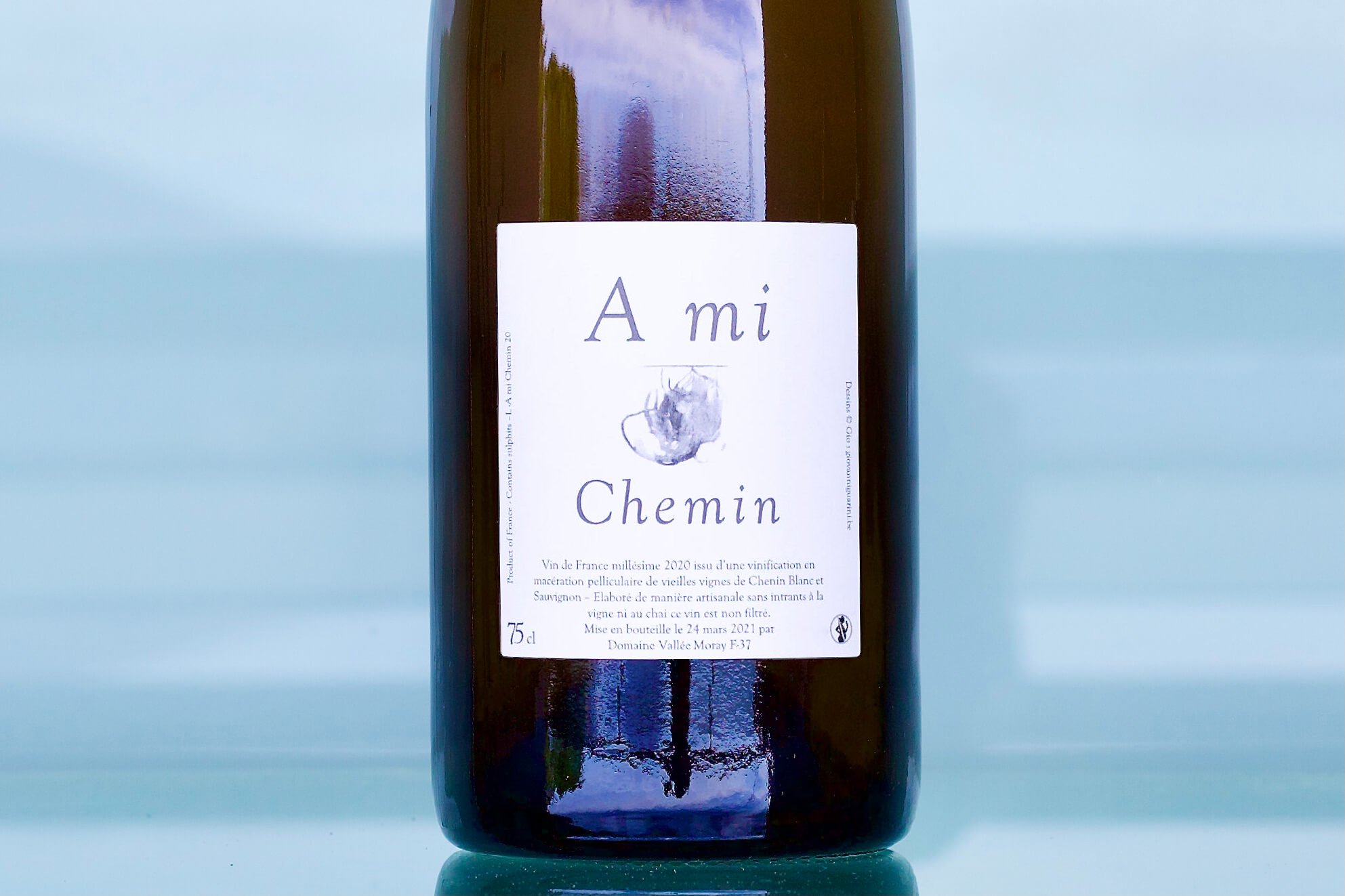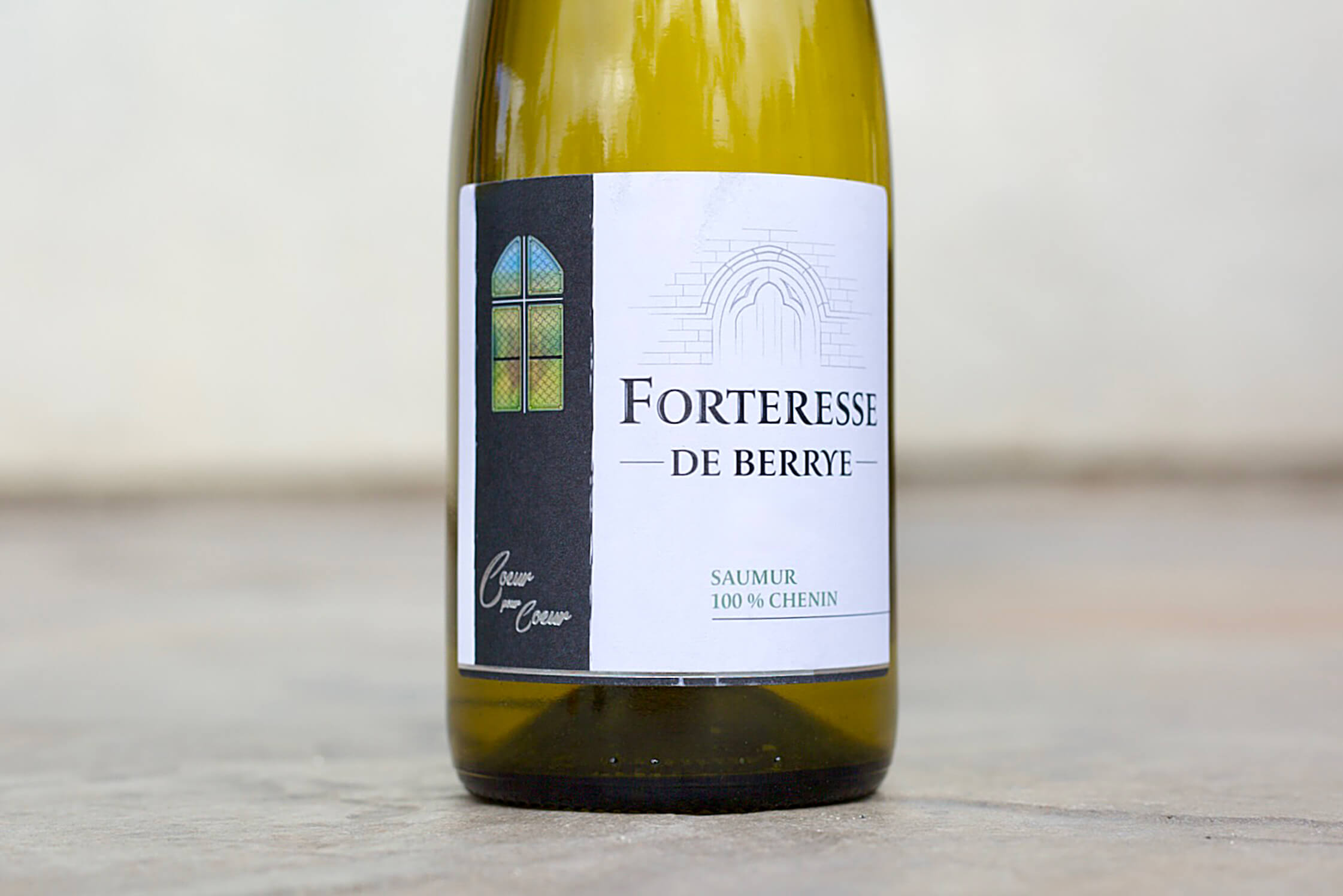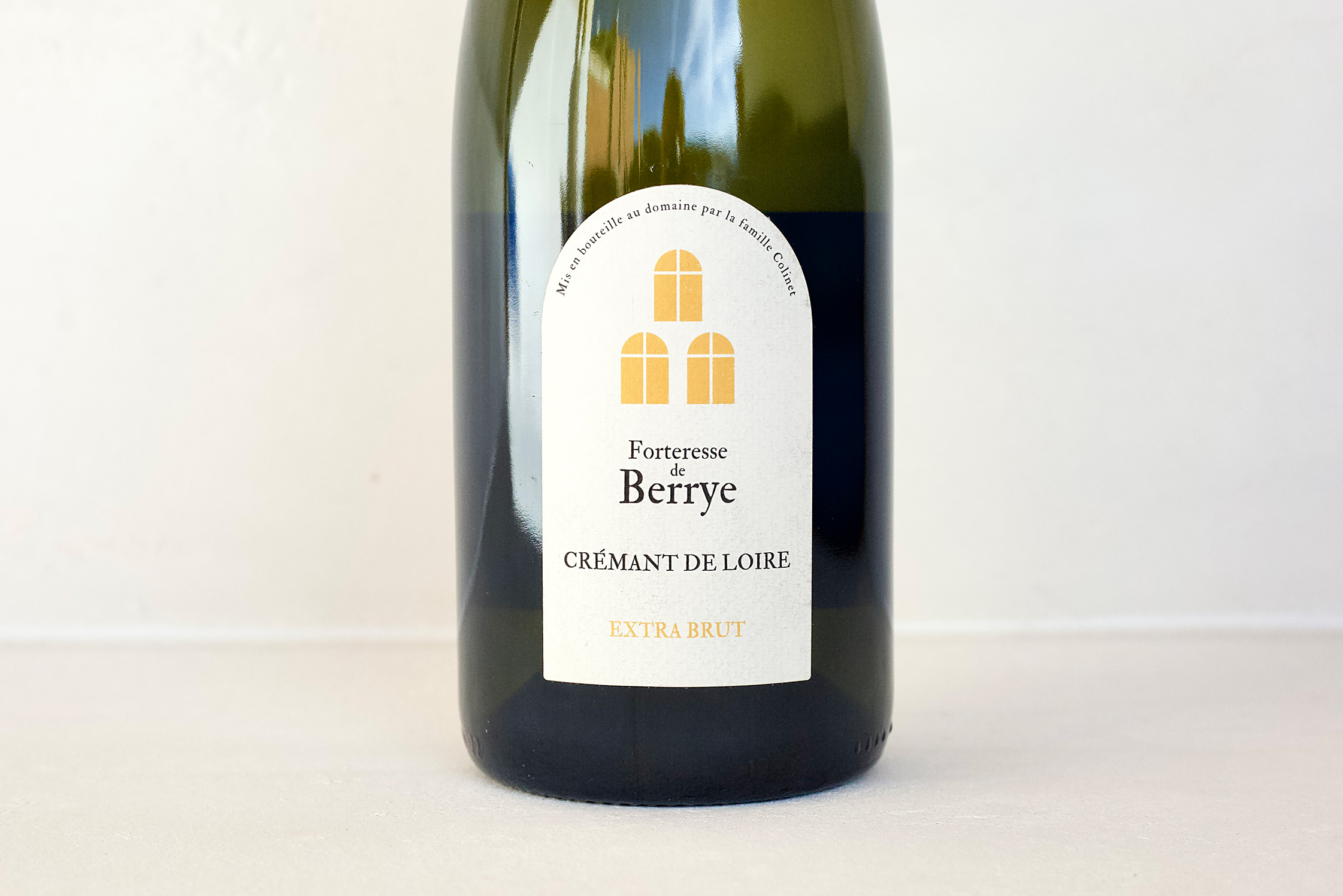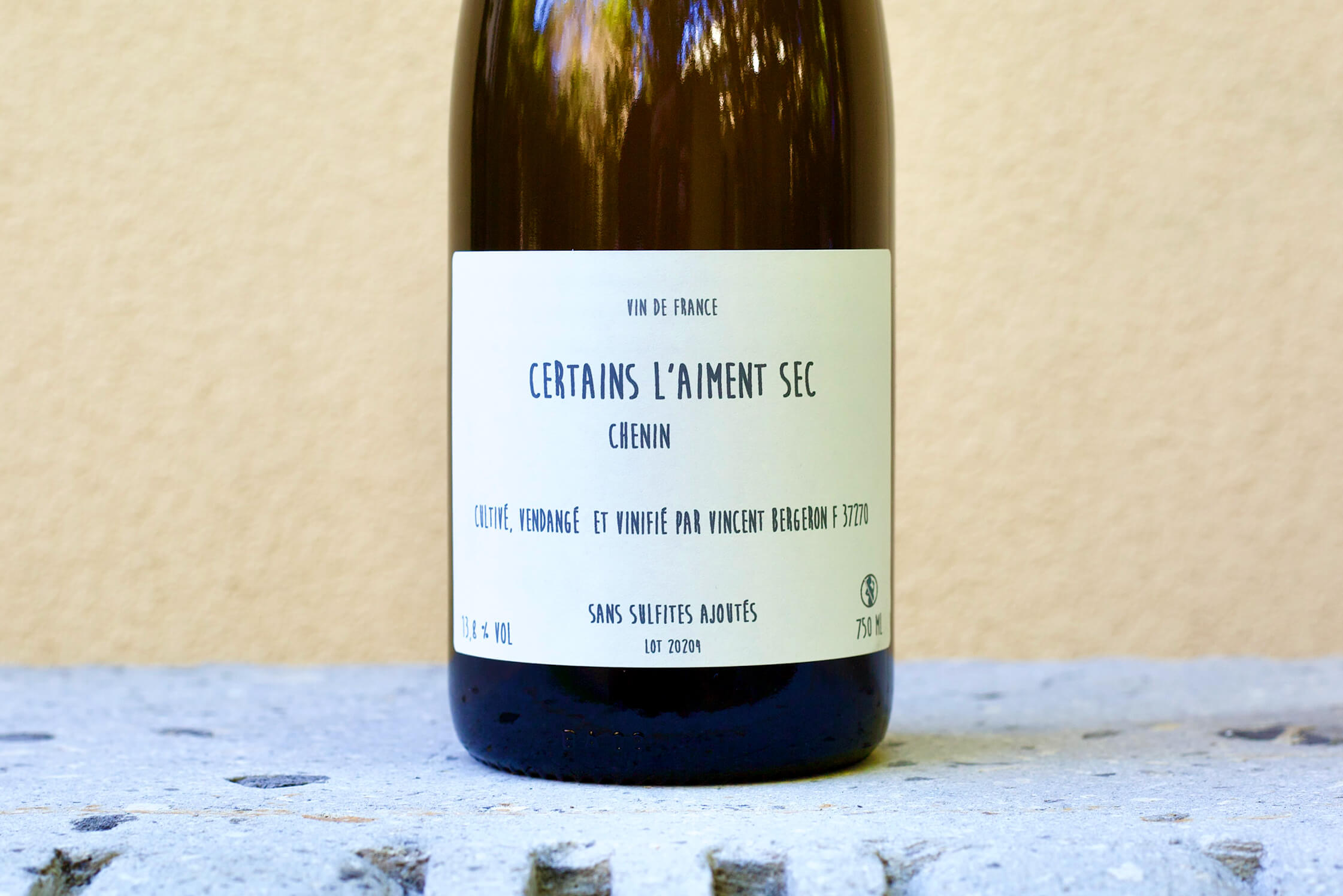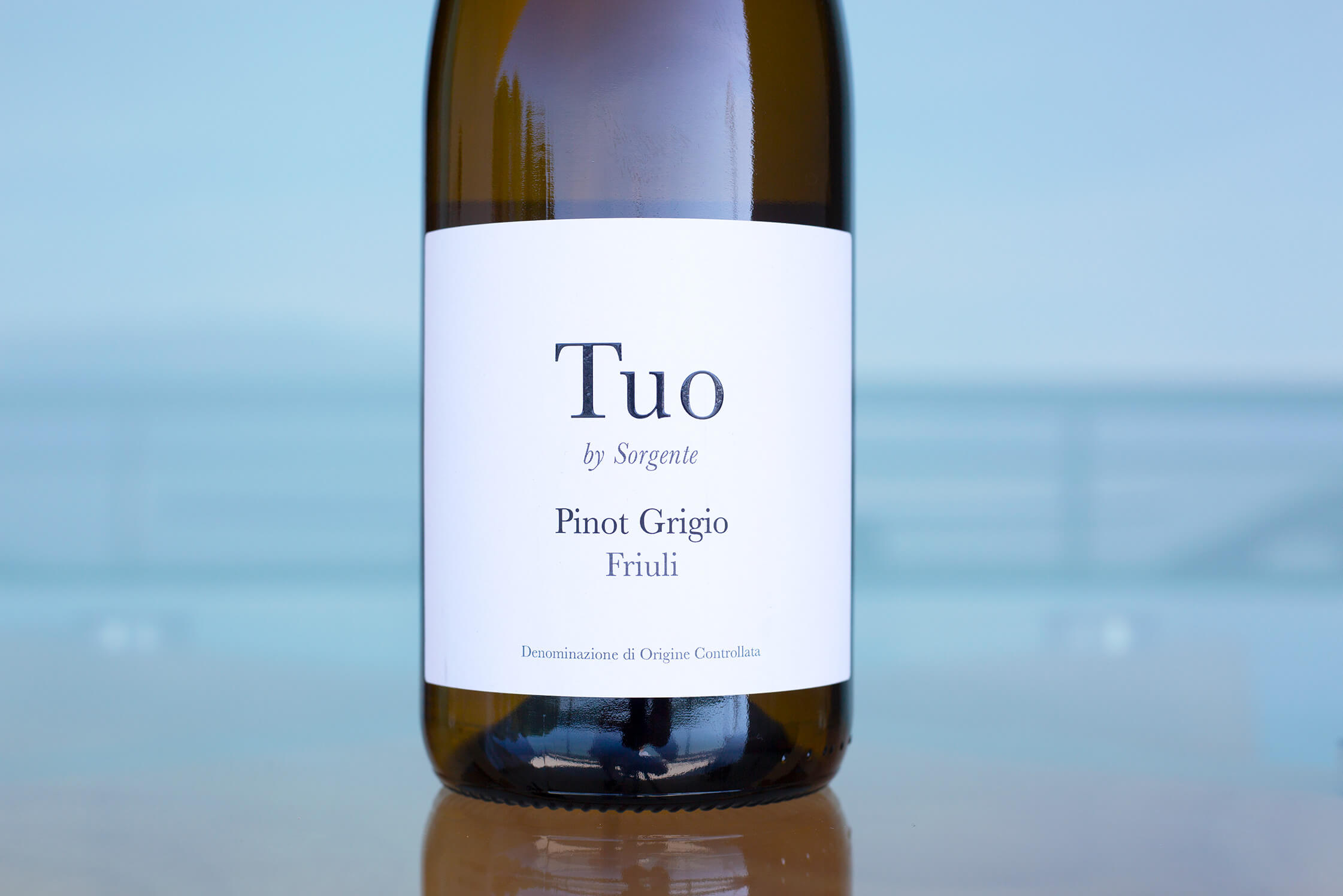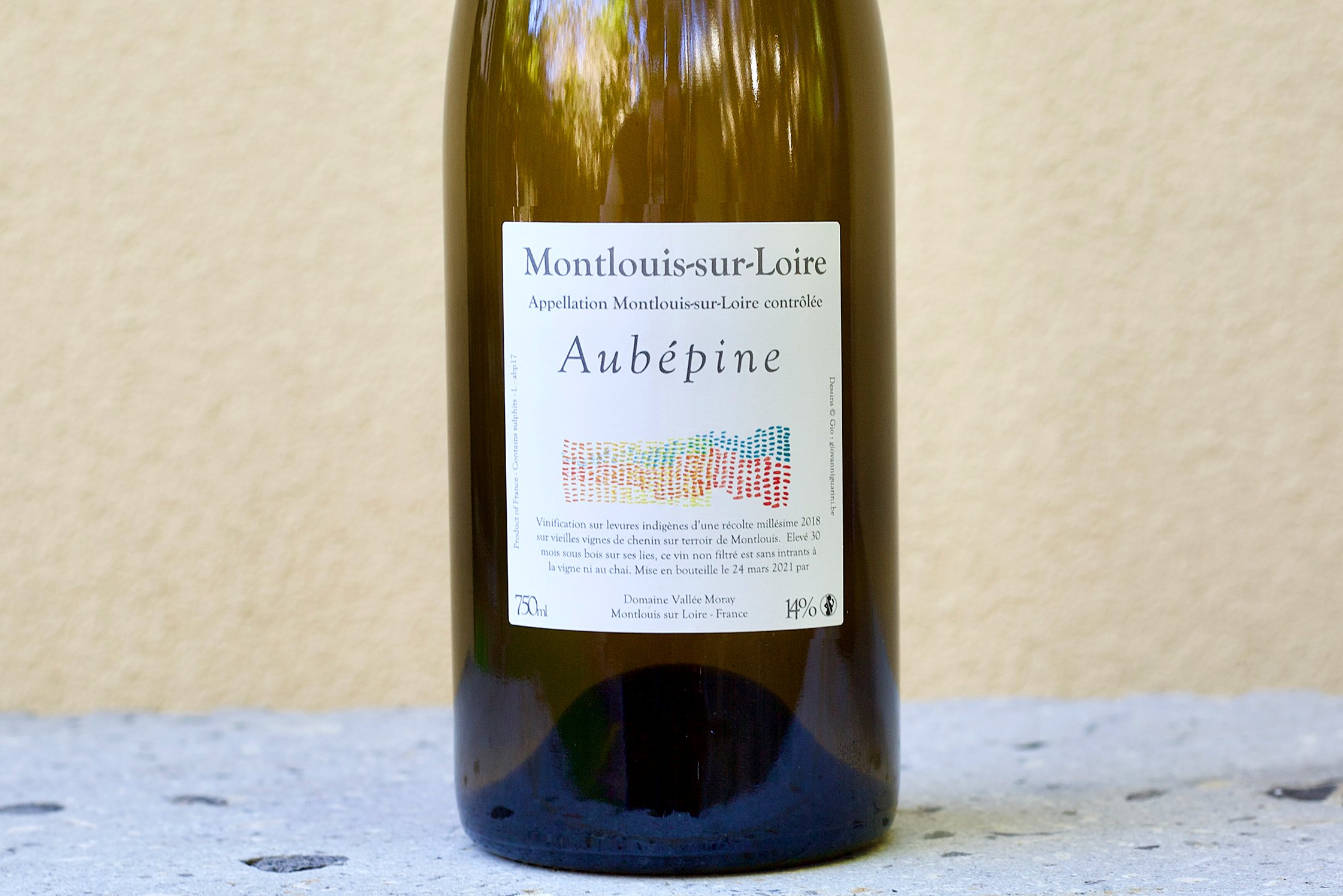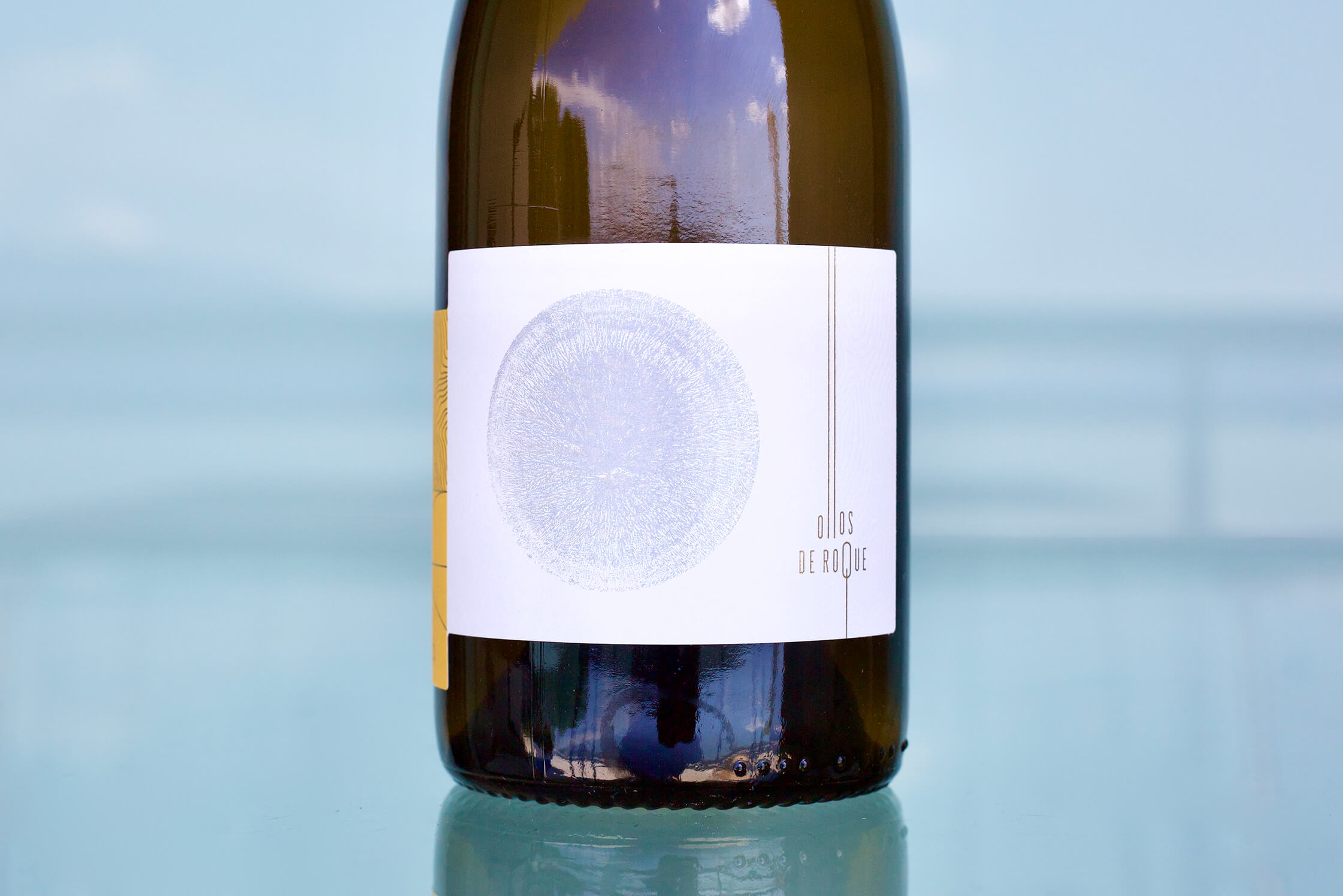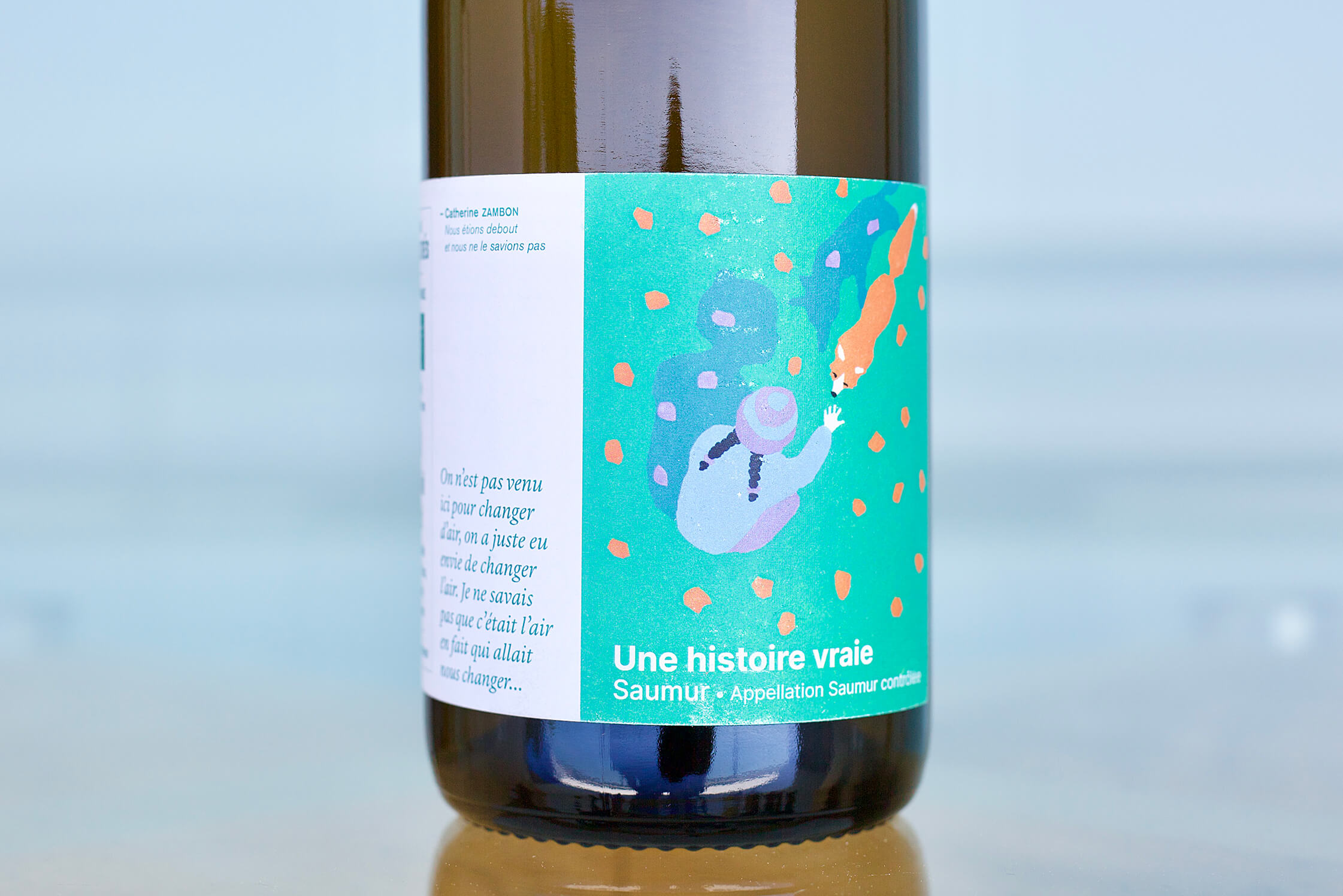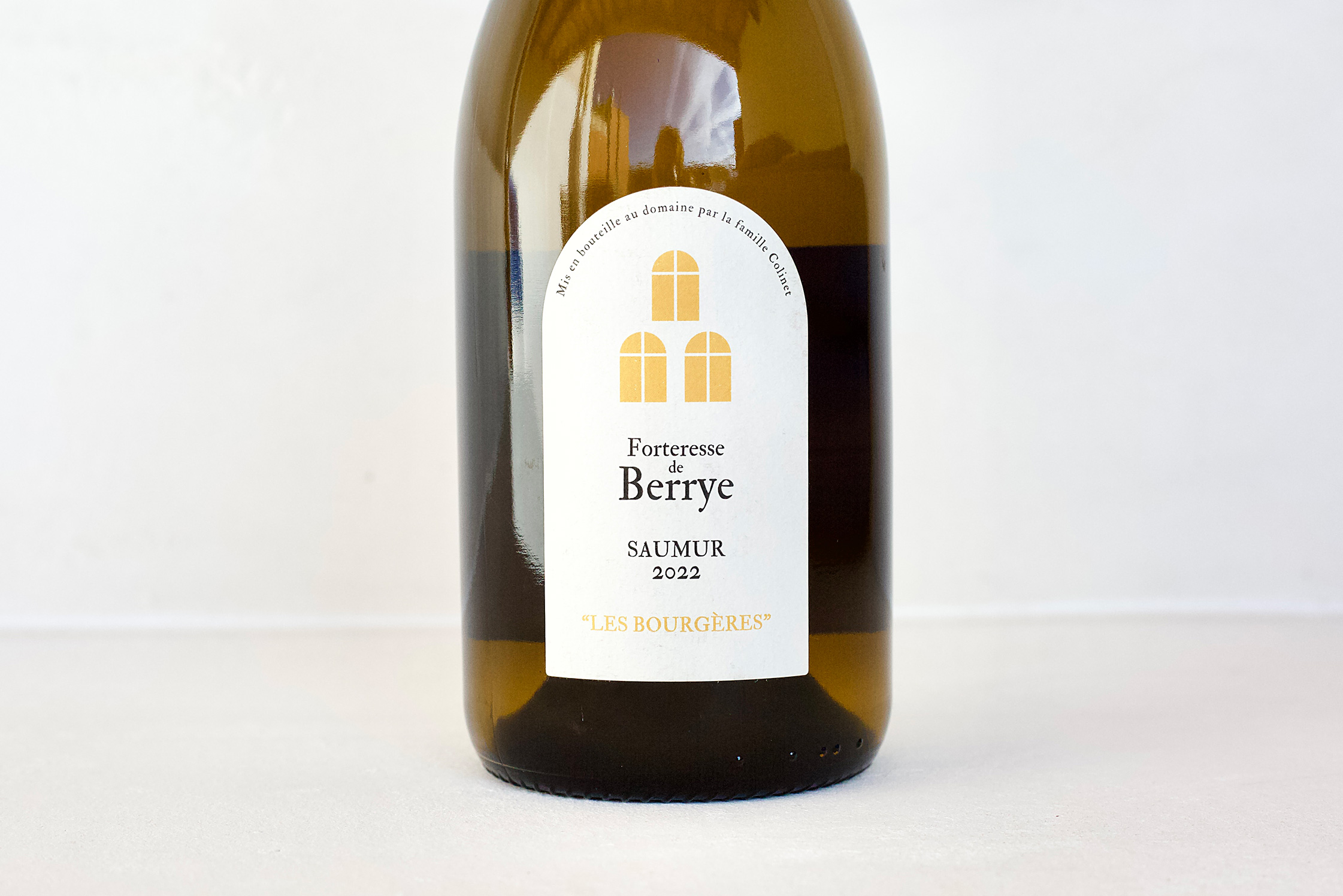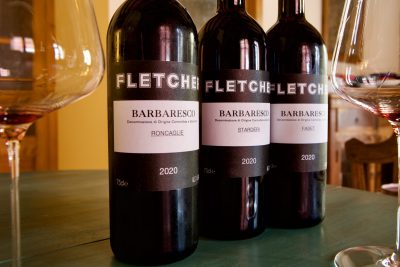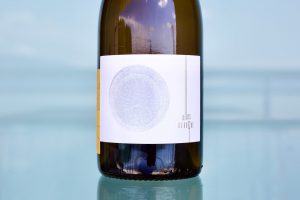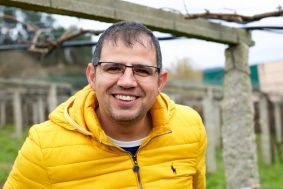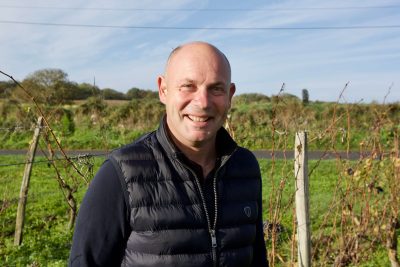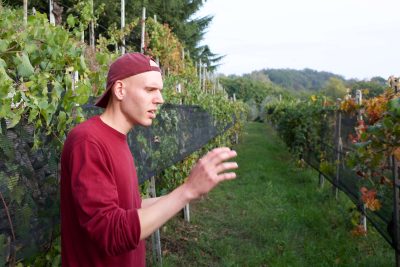(Download complete pdf here)
Lanzarote, Spain, April 2024
It’s only the middle of Spring but some days have already felt like August. Maybe I write about the weather too much, but it’s been highly unusual here in Europe, the same as in the States—monster swings in temperature happen within one day. Dry spells have parched November and April, and rains hit hard in short bursts that cause small floods. In Northern Portugal, at the beginning of April, it hit above 30°C (86°F) for a few days during a long warm week, which is very uncommon for the time of year. Switzerland topped out at 27°C while Austria’s high was 5°C on the same day and below zero at night, enough to get major frost damage in Riesling and Grüner Veltliner territory. The Canary Islands experienced a longer-than-usual dust and sandstorm originating in the Sahara, known as calima. Clouds of microparticles and hot temperatures arrive from that desert, and in some parts of the middle of April, temperatures hit close to 40°C (105°F). This is extreme even for the Canaries this time of year. They say calima usually blow in only a few times a year in the summer, but there have been twice as many in just the last few years and now they also land in the spring and late fall. We caught the tail end of this event upon arrival in Gran Canaria. Though it was considerably less intense than before I got there, it was still active enough for me to catch a nasal and lung infection—never an ideal situation, but particularly not when I’ve traveled so far to taste wines and my most useful body parts are nearly out of order.
I’m trying to avoid signing on with new growers these days. We seem to be in for another quite uncertain year with so much going on in the world and political challenges in the States, so we think it best to scale back on that pursuit for now—something I’m not used to doing. I’ll return to the US for a couple of months this summer after I hit the wine trail in May and June. My first stop will be Sicily, where we have three new growers in Etna. Even though I’ve been to the mountain three times and read a lot about it, I feel like I’m still short on knowledge and am inspired to dig in more before writing about it and how our growers fit in among their surroundings. Then it’s on to Austria to visit our most historic producer followed by another fabulous new addition to our portfolio. In the Loire Valley, we have a few more new and exciting tiny growers around the Saumur area. In Burgundy, we welcome the wines of AF Gros (for import into California only), and then we’re off to Chablis and Beaujolais to taste the new vintages. We also already snagged new growers in Jura, Jurançon, and Côte-Rôtie. (The names of our new additions will be revealed once the wine is on the boat.) I guess I’m not doing such a great job of cutting back, after all …
Verdicchio is near the top of my list of guilty pleasures in wine. Indeed, it can be made in a serious way (a sort of obligation for all Italian producers to try their hand at a vin de garde style) but its best performances, at least for this taster, are made with a simpler approach, resulting in wines like salty spring water, fresh citrus pressed, and perfect in simplicity with a sort of rawness. To accompany a warm day and salty, sweet Mediterranean seafood, it’s hard to find a better white wine in Italy. I admit that I don’t drink enough Verdicchio but I only have one set of organs sensitive to too much alcohol consumption, and there are so many special wines that cross my table. Verdicchio is simply far too easy to recklessly, and, when they’re in top form, thoughtlessly gulp down, though without too much cause for ill aftereffects—especially when under the careful nurturing of organic farming as our newest addition to The Source’s California team, the Verdiccio di Matelica producer, Borgo Paglianetto.
My maiden voyage to this once—at least to me—mythical land was a northward journey that started in Sicily last November. Accompanied by Max Stefanelli, my long-time friend and our new Italian-grower wrangler, I surveyed the many important sides of Etna where I met Federico Graziani, one of the most inspiring wine professionals and growers I’ve ever crossed paths with, as well as three other relatively new Etna producers we will make a run with this year. Then a boat ride across the Strait of Messina into Calabria led to a visit with the notably absent Sergio Arcuri, who forgot our appointment (for which we planned our entire southern Italy journey, as it is the most difficult region in mainland Italy to get to!). He’s easily forgiven due to his charm and his nice nephew stood in for him as Sergio’s mother stared us down with the Italian pantomime of simultaneous trust and mistrust. What also gives him a pass is his uniquely fine touch with one of my favorite new personal red wine discoveries that’s from a grape as old as any cultivated in all of Italy: the entirely submerged cap, four-year-concrete-aged Galioppo, bottled as Cirò Riserva “Più Vite,” a wine with which I am completely smitten. It was then through the dreamy landscape of the barren Basilicata, passing two of my favorite historic villages: Matera (the location of the opening scene in 007’s No Time to Die) and Venosa (a hidden treasure of a town, once home to the famous Roman poet, Horace), where we visited the generous Latoracca family (Cantina Madonna delle Grazie) and the now thankfully extinct volcano, Monte Vulture, that in its last eruption some forty thousand years ago decimated everything within about twenty kilometers. Terrifying, though its legacy left behind one of the most serene and expansive rolling-hill countrysides that alternate with limestone white from the Apennine Mountains, pitch-black volcanic clay and beige tuff, with tropic-like green ravines in some of the most fertile areas and arid grasslands in others.
Matelica, November 2023
After a stop in Abruzzo’s high country to Cantinarte and their gorgeous, high-altitude rock village, Navelli (a top choice for ex-pats looking for the most civilized of areas in Central Italy with fabulous ancient houses in need of a new caretaker), followed by a spectacular view of the 2,912-meter tall (9,554 feet) limestone massif, Gran Sasso. As the weather began to feel notably more like fall, and with the race against the setting of the sun having been lost, we passed into the Marche and a sharp turn west away from the sea toward the Alta Valle dell’Esino, home of the famous Verdicchios of Matelica. It was here where I woke up in the mostly red brick and ancient town center of the once mythical Matelica, a charming but depressing town where I initially felt a false sense of romance, which seems to all have been bottled and exported. The solemn peal of the church bells and their welcoming of a new day and perhaps the first frosted ground of the season signified not only the time but more importantly, the end of a sleepless night in my quaint–or rather, don’t-touch-a-thing, sleep-in-your-clothes-and-try-not-to-move-once-in-place, go-to-the-bathroom-somewhere-else, and don’t-even-think-about-the-prison-like shower, accommodations. The greasy front desk attendant’s insincere smile which I should’ve taken as a red flag foreshadowed what was to come. It was indubitably the worst room I’ve ever stayed in among the many questionable single-night residences I’ve taken during more than twenty-five years of regular and frequent European travel. Once the bells tolled, it was purification time by way of sweet mountain air and minerally Verdicchio, followed by getting my shoes embedded with sticky clay and an uncountable amount of limestone rock fragments.
Located sixty kilometers from the Adriatic Sea in the Verdicchio di Matelica DOC, Borgo Paglianetto is both in the heart of Italy’s Marche as well as in an area most famous for mountain-and-sea influenced, salty, minerally Verdicchio. Inside the unique north-to-south-running, land-locked Alta Valle dell' Esino, Borgo Paglianetto began as a collaboration of five friends in 2008. They have nearly 30 hectares planted over the last 15-35 years, and they’ve been under organic certification since 2013. The straight-as-an-arrow vine rows face mostly east, peak at 390 meters and gradually flow downhill to 330. The mother rock is Jurassic limestone from the same period as Burgundy’s Côte d’Or, and with similar frustratingly sticky (especially for deep traction boots), thick, grayish-white clay topsoil found in many of Burgundy’s best white wine vineyards. The results across the range are impressive, but none more than in the value delivered by the two entry-level Verdicchios: Terravignata and Petrara. (Bottle photos borrowed from Paglianetto’s website)
In Paglianetto’s Verdicchio starting range, the leader is a total toss-up; side by side, my preference rating is nearly an equal split. The Terravignata Verdicchio di Matelica, harvested from younger vines on east-facing slopes and only four months in steel, strikes my fancy because of its fluidity. It scratches that itch for a drink-it-don’t-think-it, salty, minerally, gentle, airy, spring-water palate refresh with a little citrus and flower. In contrast, though only by a little, the Verdicchio di Matelica Petrara, harvested from a mix of young and old vines (as old as 35 years) on a southwest face, is slightly more substantial, more textured beyond acidity and fluidity. If one needs just a little more in their white wines than the refreshing rainwater feel of Terravigna, this will hit the spot. Both are fabulous and represent great value for organic white wines, especially for this often-overlooked grape from a special appellation that only needs a makeover in its tourism sector. That being said … if those hotel prices stay low due to the lack of tourism, the wine prices will too.
Later in our most memorable day, on our drive away from Matelica toward Tuscany, we stopped at a roadside, independently operated café without any discernible name beside a gas station, halfway between Sansepolcro and Arezzo, on the south side of the road where I had a death-row, last-meal-level porchetta sandwich with grilled and marinated vegetables, which would be worth another round in that whatever it was that we escaped from the night before. I’m just glad I came out of it all symptom-free.
Even those perceived as the most tightly orthodox wine sculptors with a strong and respectful relationship with nature play with the natural-wine fire. For some, it changes their entire approach to winemaking. For one of Austria’s Wachau rebels, Peter Veyder-Malberg, a well-known, bacteria-loving naturalist in the vineyards, who toyed with today’s free-wheeling anything-goes-(if-it-works)-natural-wine practice, it had the opposite result.
“When natural wine came around, I wondered if this was a way to find a different approach to winemaking,” Peter said, adding: “So for about five years, I experimented. My wines, and many of the natural wines I focused on, were missing the voice of their terroirs. And my natural wines were not happy compared to those with which I was more attentive. Eventually, I decided it wasn’t my way. In fact, it gave me an even greater taste for classical wines. I decided to focus on making my wines in an even more classical style. In the Wachau it makes sense to concentrate more on terroir and focus on typicity, and to focus even more on vineyard work. I can’t leave a wine unattended, hoping something nice comes out. I need my little babies to go in the direction where they are very clear and very precise.” Most of Peter’s small-batch experiments went into the Liebedich Grüner Veltliner, except his Grüner Veltliner “Alter Native,” a month-long skin-contact orangish-white.
Peter’s 2022 range is indeed classic, clear, and precise. This season’s wines flow more gently upon their release-time than the architecturally sublime and tight-framed 2021s. Peter has noticed an interesting pattern in the seasons since his Wachau start in 2008 (with as many as fifteen years making wine in Austria before that). Every other year shares some similarity: the even-numbered years (2008, 2014, 2022, etc.) were difficult to navigate, while the odd years had fewer “restless nights before harvest.” “Most of the even years were quite tricky due to weather conditions with more rot in the vineyard. 2022 was one of those tricky years with a lot of loss due to rain. Quite cold harvest weather. Nice fruit. Less sugar production at harvest, so lower alcohols. They are very elegant and for earlier consumption. The 2021s are bolder and higher in alcohol [though around a modest 13% on the top wines] and with lower pHs. I prefer to drink 2022 now and wait on the 2021. Like other even years, there were many sleepless nights thinking about when to harvest in 2022. But as soon as the grapes are in the cellar, after a lot of sorting during the pick and a lot more cleaning before that, you feel safe.”
Peter explained that once the grapes are in the cellar, “I don’t do a lot. By finding the right moment to pick and having only healthy grapes with low pH levels there’s not much to really do. But I want to know what’s going on. As long as I know what is happening, I am happy.”
“2022 was hard to judge during fermentation, but after Christmas, we tasted and were delighted. They showed so nicely. From then on, we were quite happy.”
Once the fruit is clean and secure and the fermentations started, Peter’s main objective during fermentation is to make sure that the wines don’t exceed 24°C, “to keep precision, and so the aromas won’t be cooked out.”
Both Grüner Veltliner and Riesling are macerated up to 24 hours before pressing. The length of maceration time depends on the ripeness of the fruit with the riper fruit for less time. Skin contact increases the pH level of the grape must, so higher pH grapes (less ripe) can take a longer skin contact, thus possibly developing more tannic structure as well. Also, the grapes are harvested and sorted to have as little botrytis as possible, which in other Wachau producers’ Smaragd wines increases body and aids in meeting the minimum requirements for alcohol. Most producers of Grüner Veltliner and Riesling don’t allow much skin contact with more sunburnt grapes. Greener grapes are given the greatest lengths of time on the skins.
Fermentation temperatures are limited to 24°C, as mentioned above, to keep precision, and so the aromas won’t be cooked out. Aging depends on each wine, with the starters in the range spending less time in vat, but none more than a year before bottling. Malolactic is completed on the Grüner Veltliners and inhibited with Rieslings. Sulfites are added “as late as possible,” either after malolactic or just before bottling. An occasional new barrel is in the mix as a replacement, but we benefit today with no new wood characteristics in any of the wines, except maybe a touch in the new Weitenberg Grüner that quickly folds into the wine and is forgotten. Stockinger is an important cooper for Peter, with 15-20% of the barrels comprised of acacia wood (with Buschenberg Riesling mostly aged in acacia) and the principal portion, oak. Steel aging is used primarily for the starting range (Liebedich, Bruck). Peter’s Rieslings are filtered because they don’t pass through malolactic fermentation, though they’re not fined. Riesling is more protein stable than grapes like Grüner Veltliners, which, at most cellars in Austria because of their short cellar aging, are fined because of their naturally high proteins. To avoid fining, and to have a clear wine, Grüner Veltliner would need much more time in the cellar aging to become naturally protein stable before bottling.
I always hesitate to write detailed tasting notes, though sometimes I cave, with caveats such as: A Veyder-Malberg tasting (with Peter’s wines, it’s more like a drinking because it’s a pity to open such wines only to taste and scribble notes!) is nothing more than a moment in time. It doesn’t fairly represent the unique experience of a wine at different evolutionary stages in different environments experienced by various people, each with their own biases. And even though some compounds are present that emit precise aromas, we all have our own perspectives calibrated to our memory and creativity as tasters. There are particularities that may resonate with us but may not attract someone else’s attention during their experience. That said, I experienced these wines in the spring of this year, in Portugal, just weeks before publishing this newsletter. Each bottle was initially assessed through tasting (and spitting) early in the afternoon or morning, with the latter half polished off over dinner with complimentary foods and with my wife. However, as with all wines, there are some elements, like shape and structure as affected by each season and terroir imprint, and a general fruit profile that captures a combination of a season’s weather, the vineyard work, picking decisions of the grower, and cellar handling, to which I may indulge a suggestive note or two.
Meaning “love you” in German, Liebedich is the most ethereal and easygoing of the Grüner Veltliners. It comes from many different parcels planted in the 1950s to the 2010s between the far eastern part of the Wachau around Loibenberg, and the far west, past Spitz and into the Spitzer Graben. The soil diversity includes gneiss and mica schist, but mostly the calcareous loess and river deposits lower on the slopes and abutting the Danube. With altitudes that range between 200-270m in all the different exposures, vine ages, genetic materials and more, it makes for a sort of Wachau snapshot Grüner Veltliner with a broad range of complexity without the particularities of a site-specific wine.
Hochrain is more substantial and deeply complex than Liebedich. It comes from Wösendorf on the western end of the Wachau on south-southwest-facing steep terraces between 260-290m. Though the bedrock is a mix of loess and decomposed paragneiss, Ried Hochrain expresses more Wachau typicity (though not Wachau cellar styling) for this variety in that its topsoil is predominantly loess. Grüner Veltliner is a high-maintenance grape and suffers too much in more spare, poor soils (at least for today’s common clones, though perhaps not with old massale selections like Peter’s Weitenberg?). Planted in 1987-1992, it’s full-flavored, fuller-bodied and has the most thrust among Peter’s Grüner range, which may be partially due to the young middle age of the vines and even more the richer loess soil.
Peter’s Weitenberg is the most profound of the Grüner Veltliners. Harvested in Weissenkirchen from south-southwest-facing steep terraces at 320m, it was planted on orthogneiss and mica schist with ancient massale selection in the early 1950s. It offers the rare pleasure of a historic and now rare Grüner Veltliner grown entirely on the acidic bedrock usually set aside for Riesling. As mentioned, the variety doesn’t like stress but prefers richer soils like those of the Danube’s alluvium and the windblown calcareous loess. Weitenberg is salty and concentrated, deeper but also finer, and more angular than Hochrain, though not with sharp Riesling-like angles. It finds its richness from the concentration of the ancient cultivars in spare soil and the heat that occurred in 2022. It’s led by more stone fruit notes and deep saltiness than the spice, white pepper, and citrus of Hochrain.
Spitzer Graben with the crus, Schön in front, Bruck on the hill to the mid-left, and Brandstatt to the upper left.
Bruck is the tighter-framed Riesling in the range, not specifically because of the terroir but by Peter’s choice. It’s from an especially cold site on the Wachau’s coldest left bank area, the Spitzer Graben. It’s on south-facing, steep terraces at 350m with vines planted between 1987-2002. Because it’s the earliest Riesling picked for still wine, it receives more skin maceration time, leading to stronger phenolic palate textures than the other Riesling crus. Its aging in steel also leads to a straighter and more angular architecture compared to Peter’s other Rieslings aged in large-format wood barrels. Bruck’s meager topsoil is derived from the underlying acidic bedrock, mica schist. While the other Riesling crus may be more substantial and complex when one breaks out the complexity measuring stick, Bruck is the wine I crave most regularly because of its crystalline purity. Though it’s deeply ponderous, it also demands less of me and my attention than Peter’s other more robust dry Rieslings to get what I want from Bruck: emotional lift; a walk in the clouds.
A sort of firstborn, with all parental expectations on its shoulders, Brandstatt is Bruck’s older, more grounded sibling. Also in the Spitzer Graben on a south face, it’s podiumed high on extremely steep terraces a little further in the valley above Bruck at 440-480m. It was replanted in 1979 and the terraces repaired again by Peter starting in 2009 with new plantings from Buschenberg massale selections. Brandstatt’s naturally cutting structure due to its high altitude, spare mica schist topsoil, and cold and steep site benefits from its edges curbed by six to eight months of aging in old 300L oak barrels. In contrast with Bruck, this wine commands one’s focus to discover and feel its depth. If Bruck is my walk in the clouds, Brandstatt is a journey into a mountain with veins of precious metals, mineral-dense spring water, compression and meditative silence; a space to contemplate one of mankind’s oldest questions … “What is the meaning of wine?”
Buschenberg is on the hillside in the center of the photo
After the intensely focused and philosophically stimulating Spitzer Graben Rieslings, Buschenberg is Peter’s Austrian Oak (though it’s aged in acacia); it’s muscular and statuesque but tightly cut. The bush mountain Riesling, Peter’s most dynamic of his First Growths is sunnier and of a more festive disposition. Located in the center of the Wachau a few hundred meters from the Danube, it faces east more than south on the western end of a southeast-facing amphitheater on extremely steep terraces between 330-430m. Here, daytime warmth is captured and slowly cooled as the sun drops behind the ridge hours before the sun sets, protecting it from a full summer day’s solar power. Planted in 1979 on mica schist, it’s characteristically marked each year by more stone-fruit and sweet flowers than the citrus, white fruit, and savory floral notes of Bruck and Brandstatt. All three Rieslings share a massive mineral drive, but Buschenberg’s is warmer in sensation than the steely cold Bruck and Brandstatt.
If Peter’s Schöner Riesling is new to you, you might not expect it to run from its dry comrades and fly from the stage like Bono into the outstretched hands in Vienna’s famous Musikverein concert hall. Here, Classical Austrian Riesling takes a sharp one-eighty turn a few decades toward the retro funk of Virtual Insanity combined with a little rock ‘n’ roll. Its lines are gneiss-groovy, and the nectary spell of glorious Kabinett-level natural grape sugar and freaky acidity makes it impossible to resist. Not to be confused with the cru, Schön, it’s a blend of the first picking of slightly botrytized grapes (clean botrytis) from many different parcels of terraced vineyards facing mostly east to south, planted between 220-470m from 1977-2012 on gneiss, mica schist and sandy topsoils derived from the bedrock, including the crus, Bruck, Brandstatt, Buschenberg, and Burgstall—major firepower there! The frequent age-old problem with wines like the devilishly irresistible Schöner was a matter of shortage. Schöner’s first season, 2013—my favorite vintage since the great trilogy of 1999-2001, until 2021 made its arrival—didn’t even make it out of our warehouse to any accounts. Greedy? Well, with only 18 bottles, what does one do? As Sam Harris would say, there’s no such thing as free will, so based on my biology and upbringing, history with wine and what I had for breakfast, I had no choice but to keep them. But let it be known that every bottle was shared with wine lovers, so the message was spread, and the love shared; I look at it as no one paid for an ounce of the 457 ounces allocated to us, except for us: generosity not greed! Lucky for all of us, there’s more now (240 bottles to share far and wide in California, minus 12 for my summer visit), and what’s more is it’s the 2021 laser beam that’s arriving—a perfect vintage for an Austrian off-dry, Kabinett-style Riesling. It’s beyond yammy—as our Portuguese friends say yummy. And speaking of our Portuguese friends …
“It’s difficult to talk about myself,” Constantino replied when asked about his evolution since he resigned two years ago as the head winemaker for Anselmo Mendes, Vinho Verde’s most prolific producer in recent decades. Anselmo plays it pretty straight from an enological point of view, and Constantino came from a pharmaceutical background before leaping into the wine business. I consider Constantino one of my best friends, and I know firsthand how hard it is for someone as humble as he is to talk about himself. I see the results, but wanted his take. So I persisted.
“I feel I’ve been moving towards a more pure expression of the fruit with less and less intervention, even if that can bring some less ‘pretty’ features to the wine. Wines are like people. When we like them, we have to like them with their virtues and faults.”
Constantino already went more toward a “hands-off” approach before parting ways with his mentor, but I’ve recently noticed greater changes in his wines, especially with the 2022s that are arriving now. “I’m more focused on traditional winemaking and old vineyards, but I would say that my project is as much ethnographic as it is about wine. But to sum it up in these last couple of years, I’m not afraid of going even deeper on a less interventive process. It’s a leap of faith.” Perhaps the biggest change is his approach to sulfites. JUCA red, first made in 2020, is made without added sulfites and no fining or filtration. JUCA Loureiro, first vintage, 2022, has a small amount of sulfur only added at bottling. Even if JUCA is the more experimental, Zafirah is also low intervention.
Constantino in the Açores at one of his many consulting jobs, October 2023.
Constantino brings to us the pleasure of two opposing expressions of red from nearly forgotten Vinho Verde backcountry and forsaken Portuguese red varieties, Brancelho (light color, high acidity, low tannins), Borraçal (high acidity and tannins, medium-to-low color), Espadeiro (high acidity, medium color and tannins), Vinhão (high acidity and tannin, black color), and Pedral (high acid, medium tannin and color). Crafted differently in the cellar but from the same densely forested and green areas of the Vinho Verde’s high-altitude zones of Melgaço, we are presented with one beautifully colored, pale red made from two days of extraction on skins and the other, one full week. Both demonstrate the marriage of these oppositional bright red and dark red varieties. The beauty: Zafirah. The magnificent beast: Juca.
Made from a blend of Brancelho (Brancellao in Emish, among other names), Borraçal (Caíño Longo), Espadeiro, Vinhão (Sousón), and Pedral, the 2022 Zafirah was harvested from four plots planted between 1953-2020 on south-facing granite slopes at 200-250m. Fresh and minerally, its gentle but spry perfume of dusty wild red forest berries speaks to the neighboring Emish areas to the north and east, Ribeiro and Ribeira Sacra, and the great growers who forge their iron and petrichor-scented sanguine wines into some of the world’s most terroir-dense fine wines. It’s hard not to like this bright ruby-colored spicy red with an Haute Côte freshness and a tight granite-imposed finish. This is the most inviting and complex of the Zafirah bottlings I’ve had since our collaboration with Constantino began five years ago.
How can a wine of this primordial cultural significance be priced like this? From a 400-meter-altitude site of indigenous, ancient massale selections planted before WWI, 2022 Juca Tinto is a field blend of Borraçal, Brancellao, Espadeiro, and Vinhão grown on a south-facing granite slope. Ink-black, with only hints of red when swirled, it’s wilder and far richer than the nearly transparent, ruby, Zafirah. Reminiscent of Ribeiro’s living luminary, Luis Anxo Rodriguez’s mid-tier granite red of a similar varietal blend, A Torna dos Pasas, JUCA is only a little darker, sauvage and tense. However, when tasted next to Zafirah, though it shares similar palate pressure points and textures, it’s far juicier, beefy, animally, spicy, and foresty. As it opens, its one-hundred-plus-year-old vines flex and speak of damp moss, wet earth and wet eucalyptus, bramble, bay, and high amplitude but concentrated blackberry and huckleberry. JUCA tinto is raw wine like the press-wine squeezed between granite slabs straight into the glass.
Constantino’s two white wines are in very short supply so I’ll keep it brief, even if they are worthy of longer descriptions. The 2022 JUCA Loureiro comes from the Lima Valley and is grown on granite soil at 20m altitude and 20 kilometers from the Atlantic. Juca is a fun but seriously framed Loureiro, juicy and fuller in body than the linear Quinta do Ameal Loureiro that’s also in our portfolio. The 2021 Alfuente Alvarinho is a much more serious wine. Upon opening, it shows a little new wood (a few new barrels purchased for this year; it’s normally raised in old 400-L French oak) but it’s nicely balanced with reductive elements that bring it close to a French Chenin Blanc or even a stricter Burgundy-style wine. It’s harvested from a four-hectare parcel (10 acres) in Melgaço’s Vale do Mouro planted by Constantino and his cousin in 2014 at an unusually high altitude (200m) for an Alvarinho (Albariño) in these parts. (Usually, they’re grown at lower altitudes in the hills or close to the Minho River.) The parcel is alone in the forest and just off the road, sheltered by trees on all sides with a stream nearby—afluente, in Portuguese. While the vines are very young, the wine is well-built and muscular but still finds aromatic purity and fineness. More time open will greatly reward the drinker, and it’s also sure to cellar well.
Douro shot from Quinta da Carolina
With each season’s quirks, its immeasurable variables and game-time decisions in vineyards and the cellar, doubt remains in the minds of the world’s great vignerons no matter how thrilling the result.
“After ten years I finally feel like I’m starting to know our vineyard,” were the first words in response to an inquiry on how Luís feels about his process today. Over the last ten years, Quinta da Carolina has undergone full conversion to organic and the use of biodynamic treatments and principles when useful, and regenerative agriculture inside their already polycultural, biodiverse setting interspersed with citrus and olive trees, wild brush and an endless supply of hungry and fiercely greedy wild boar.
Born in 1988, fluent with four languages, with a master’s degree in Winemaking and a degree in Agricultural Engineering, global viticultural experience, a Level 4 WSET diploma, and Professor X-level memory, there are few more enlightened and driven young growers in Portugal than Quinta da Carolina’s Luís Pedro Cândido da Silva. Luís’ exposure to the world’s top wines and his developed skills and capacity to realize his visions in vinous form are rare. Like Constantino’s range, Luís Pedro’s is also unique, with each wine being an individual: a discovery of different varieties in the same region within various settings, from high hilltop sites with 100-year-old massale vines crafted into sharp but deep wines to those just above the river on steep terraces on north faces with more richness and classic trim (though the “classic” without any new oak barrels), and young, vigorous vines that yield high energy and intensely aromatic wines.
Quinta da Carolina, the red-roof house to the right and its vineyards and olive and citrus trees just to the left.
In many famous regions, the local wine profiles are relatively understood, if not only in a slow evolution stylistically swayed by the market’s whimsical swings. But in Douro, with so many varieties, though mostly grown on schist (with many colors and physical structures) the new still-wine style is short on definitive voice and strong on diversity: everything from old-school classics loaded with wood and maximum extraction, to those spare, mineral beams—the latter a rarity, but not at Carolina, or, with Luís’ mentor, Dirk Niepoort.
Luís’ day job as the head still-wine winemaker is with perhaps the single most influential wine person (and winegrower) in any European country in the last thirty years, Dirk Niepoort. (Though Spain’s Raul Pérez is strong competition among the world’s greatest influencers that seems to have affected an entire country’s wine culture.) While Luís focuses on the still wines, the Port wines are made in another cellar with another team. Luís worked part-time with Dirk for numerous seasons since 2012, taking the lead position in 2018, after Carlos Raposo left, and before him, another of Portugual’s most talented enologists, Luís Seabra.
Since Seabra and Raposo’s absence, the wines have naturally taken on a slightly different appearance under Dirk’s collaboration with Luís Pedro and later on the arrival of Dirk’s son, Daniel. The wines are straighter, more lifted and with greater separation of identity between plots and wines; no doubt a combination of the past winemakers explorations along with Luís, Daniel and Dirk’s modern-day renditions. We’re not score-hounds here at The Source, but maybe you’ve noticed that the Wine Advocate’s Luis Gutiérrez, most famous for his focus on Emish wine, now seems to be taking over coverage of Portugal. He just released some reviews with Dão in focus but included a full-tasting report on Niepoort, who happened to take all top ten positions. Luís-Pedro is responsible for all the still wine production on that list, which was half of the top ten: 98, 98, 97, 96+, 96. And more Niepoort wines were included in the top 11-20 with 96s, followed by a mile-long list of 95-pointers. Luis’ Quinta da Carolina wines have not yet been reviewed. So, what I’m getting at is …
Quinta da Carolina alone keeps Luís plenty occupied, and his family-like connection with Dirk and Daniel is too deep for him to be left to walk his path alone.
“Niepoort is my professional work. I love working with Dirk and Daniel. At Carolina, it’s different. I still think I’m that kid who can do whatever he wants.”
Perhaps without first disclosing it to his father who owns the winery, that kid risked almost an entire year’s crop by not using copper, as he first did in 2023. (I’ve met Luis’ father and I can easily picture the dismay on his face when presented with the idea, before or after it happened.) But it was a successful gamble. The results are a promising range currently split between old barrels, ancient German fuders, steel, and amphora. And to pick grapes whose wines shriek with acidic freshness, catch the tongue on the right balance of bitterness, and bright, crystalline fruit aromas from one of Europe’s driest and hottest terroirs requires a belief that someone will appreciate them. Of course, we do, and our customers do too, particularly those who, like me, may have grown up fond of sour candies and fruity but bitter dark chocolates. To make powerline-buzzing wines in Douro, a UNESCO World Heritage Site since 2001, requires specific circumstances: high altitude vineyards (some which near 600m, as are his parcel for Xis Branco and El3mento, from vines planted in 1919), northern exposures (as the Quinta da Carolina bottling), or sheltered inside a ravine or narrow river valley from the early morning and late evening sun. Fully exposed sites punished by the sun are predestined for Port wine.
While the kid mostly calls the shots at Carolina, his father, also named Luís Pedro, who also owns a very successful wine shop in Porto (Tio Pepe), sways Junior to continue to craft the eponymous red, Quinta da Carolina, in a more classic style, though with junior’s signature serif. The remainder of the range is racy and avant-garde for Portugal, and perhaps not quite suitable for the common Portuguese drinker, for whom it may be even completely perplexing in style, though perfect for us.
Because Luís is quite proficient in English, I thought you might enjoy hearing directly from him about our newly arriving batch. (I only did a few structural changes for flow.)
“As in 2019, the 2021 Xis Branco was a very long (maybe even longer) ripening season. We had rain throughout the harvest period. Because the vines were so thirsty and absorbed all of it, I didn’t think it was that much. However, it diluted the berries, directly postponing the date of picking. Humidity from the rain forced a severe selection from the already small crop from Xis’ ancient vines planted in 1919. Fermentation was quick but malolactic was unusually long at eight months. It also developed flor naturally, which protected it further from oxidation through the slow process without any added sulfites. And lucky for us the flor was very healthy and clean, so I let it build. After malo, I added a little sulfite for protection but didn’t top the barrels [because of the flor protection] over its year of aging before preparing for bottling in steel. Xis is always spicy and smoky with hints of honey. White pepper is also common, which may be Malvasia on very poor schist soils that express it in this atypical way. Even with the full malo (which makes it always a bit smoother and gently textural), the 2021 remains far more vertical than horizontal.
“2021 is a special year for El3mento. It’s the first El3mento from the same vineyard of Xis Amarelo (a red wine that I didn’t bottle in 2021) with a huge field blend of very old vines with varieties I don’t even know. It’s whole-bunch fermented in amphora and macerated for six months on the skins. It always showed a reductive side since fermentation, with aromas of smoky, toasted sesame seed and incense that are still present today.
I want reduction in my wines, but, honestly, I thought it would go away. It hasn’t yet—somehow, it’s crystallized in the wine, and that’s the beauty of it.
It seems like it’s more from the Canary Islands than Carmelo’s! [Carmelo Peña Santana, from Bien de Altura, shares this project with Luis, making one from Gran Canaria with the same processes in the cellar.] It’s light, fresh and spicy on the palate but with the influence of clay it has more tannins, and a kind of blackberry fruit and long spicy flavors. El3mento always has a strong character because of the amphora, and even though it’s the wine in my range that speaks less of the terroir, it’s still a wine that I have great pleasure making and drinking. [The latter of which, we do too!]
“2019 was a fantastic year, and the Quinta da Carolina has a great balance between ripeness and retention of acidity. Spring and summer were warm and dry, though not too intense, which allowed the grapes [a blend of more than 20 massale selection varieties planted in 1931] to be in perfect conditions: very healthy, thick skins, light green stems. I did a whole-bunch fermentation with foot-stomped grapes and two to three weeks of maceration, which was a bit longer than usual. As you know, I like to extend as much as possible, sometimes maybe too much, but in this case I don’t think so. This season created the most “Mediterranean” wine we produced from Quinta da Carolina. From the slow and warm development of the grapes, I feel more dried herbs, almost thyme (as in Nero d'Avola), allied with the warmth and typical red cherry nose. The wine is deep, and one of my best so far. It’s very well-balanced and solid yet light and vibrant. It’s the kind of bottle that can be enjoyed on its own but I believe it’s always better with food. The 2019 is a pure expression of how Douro can be an elegant monster without being heavy and alcoholic.”
